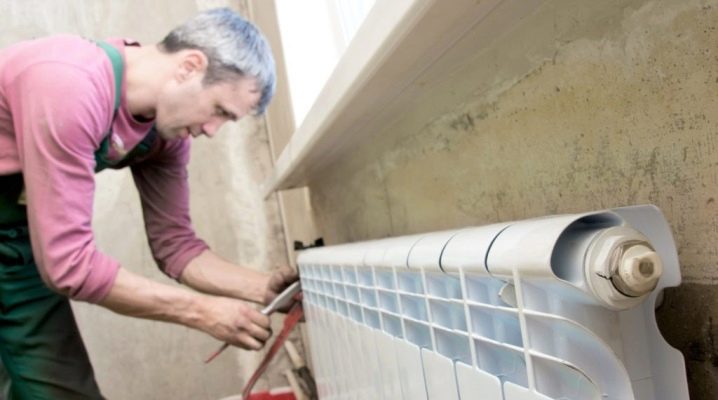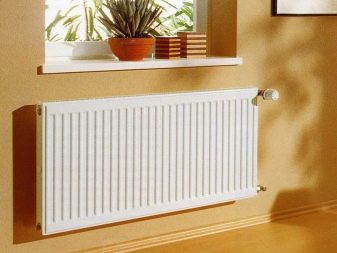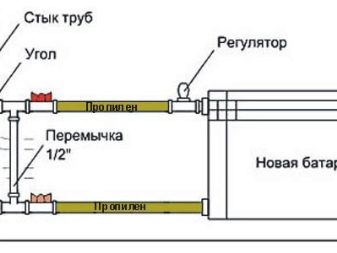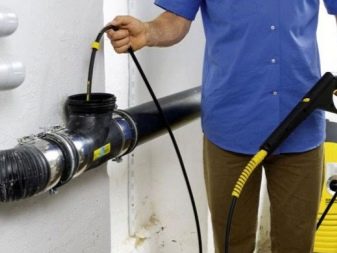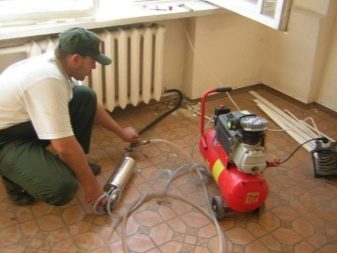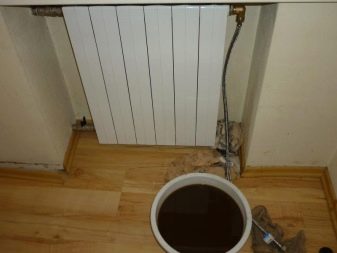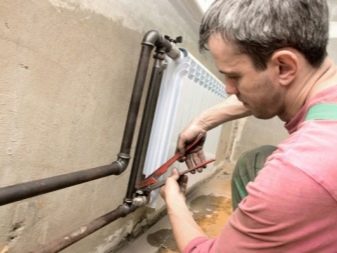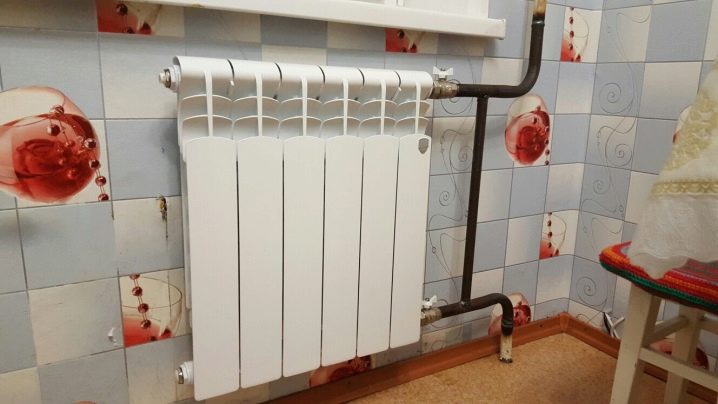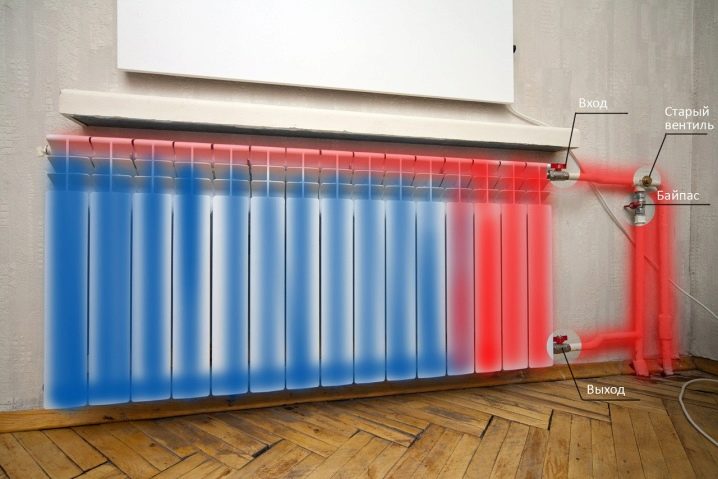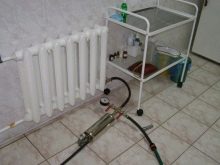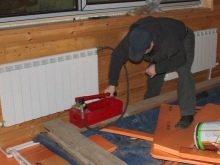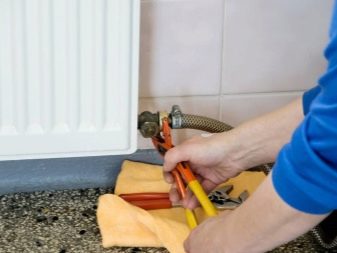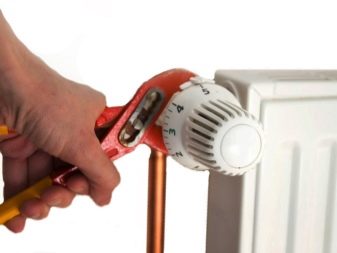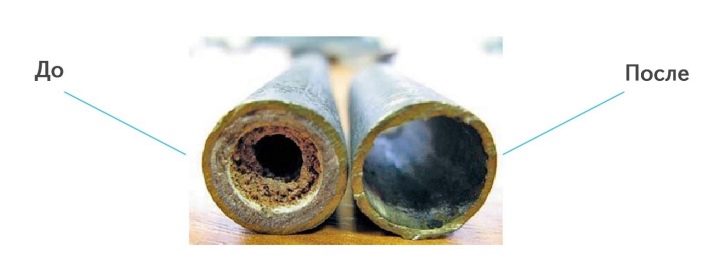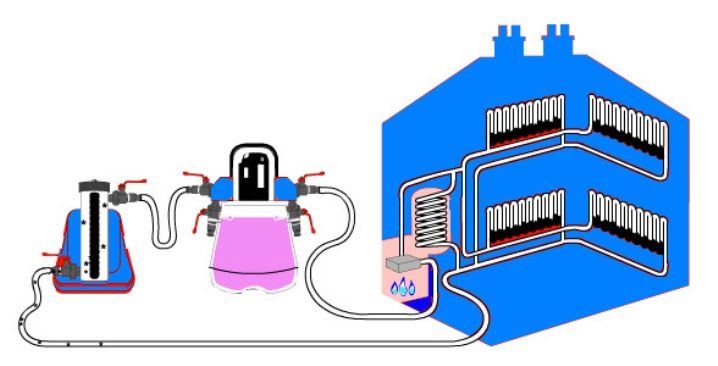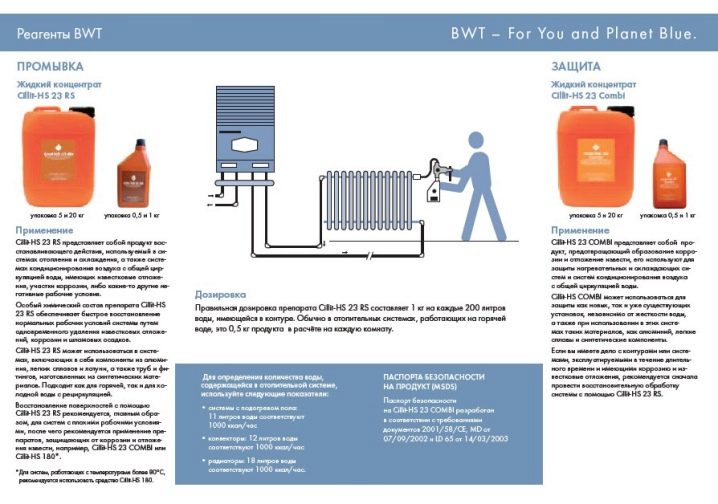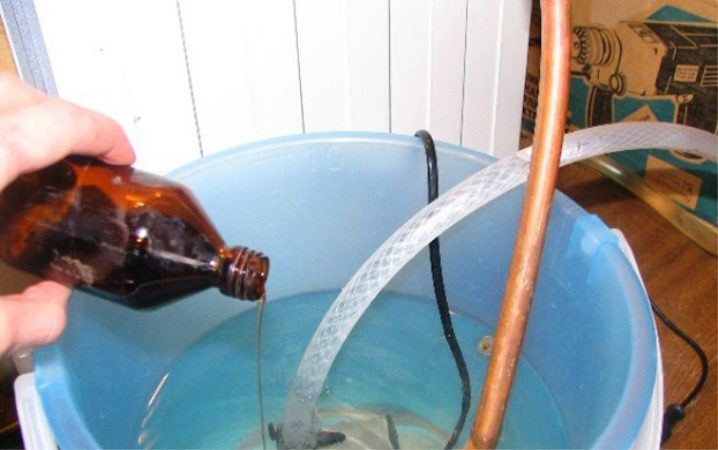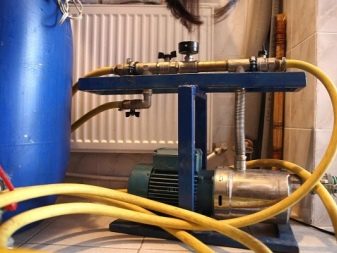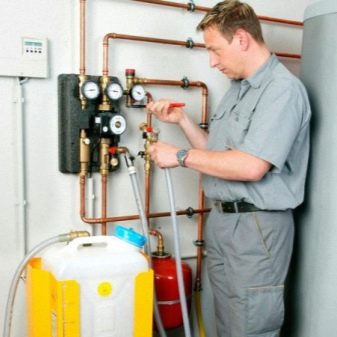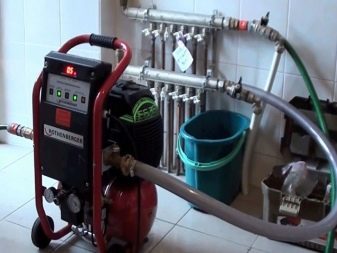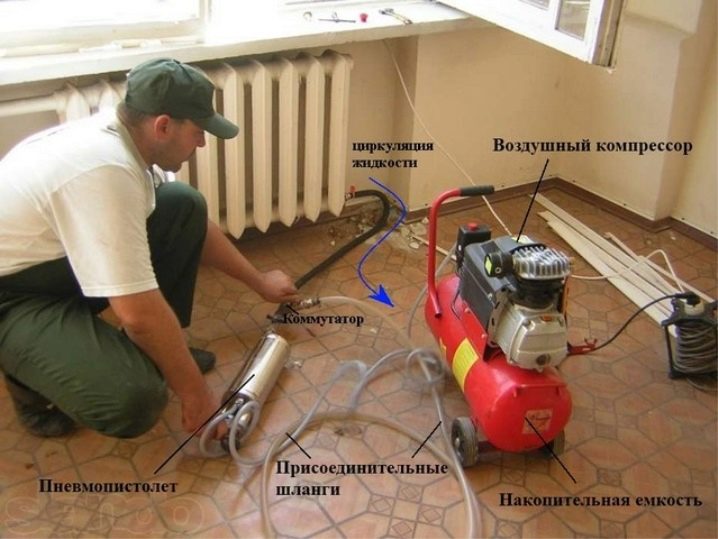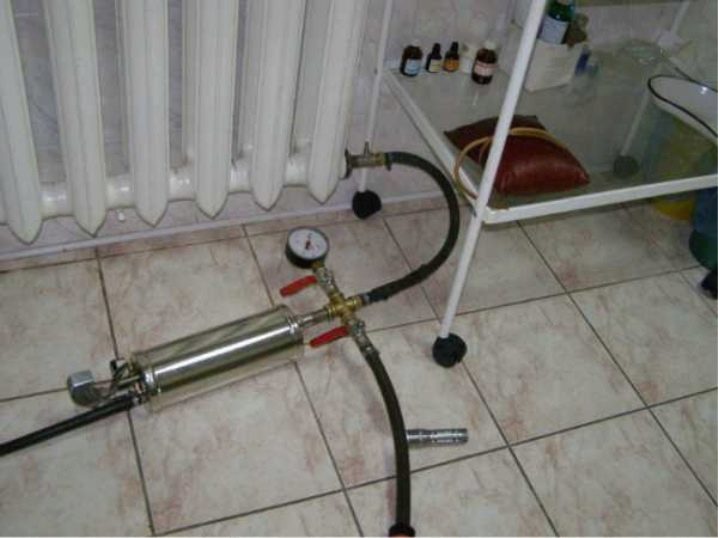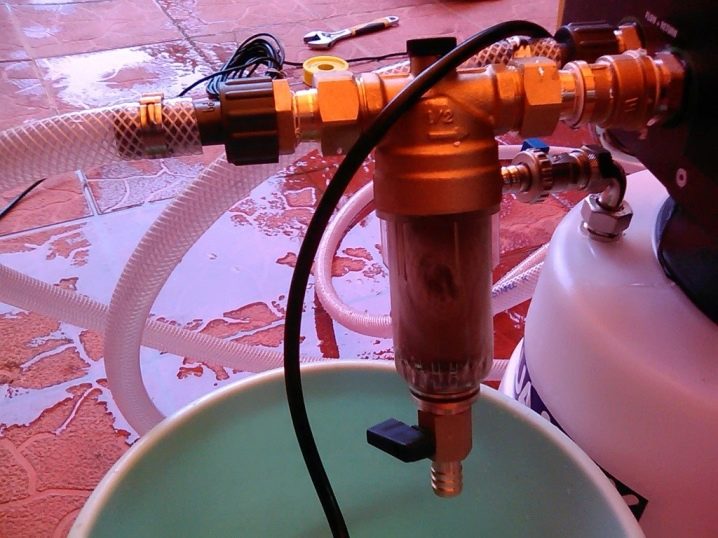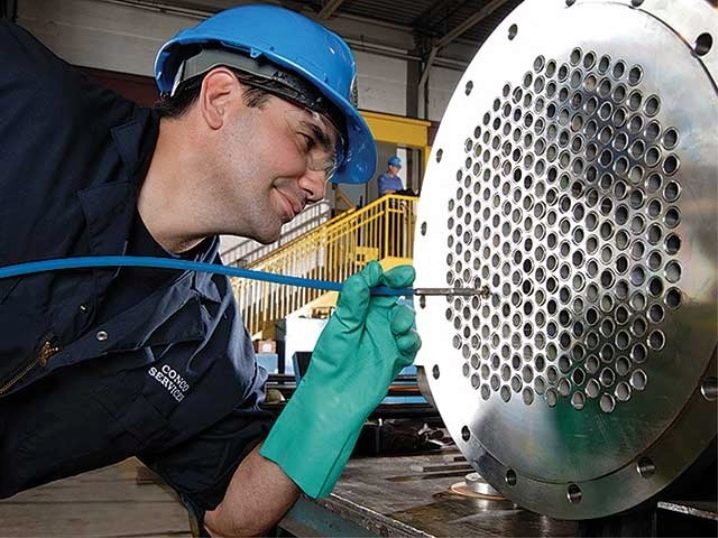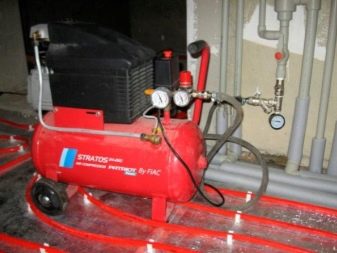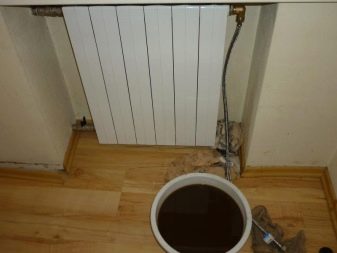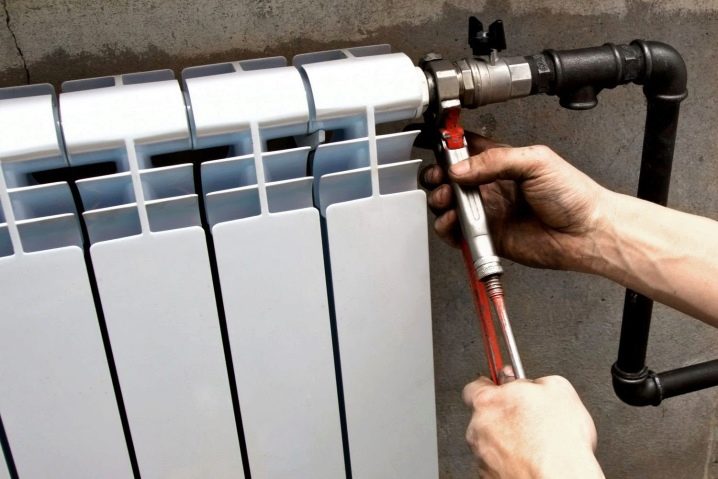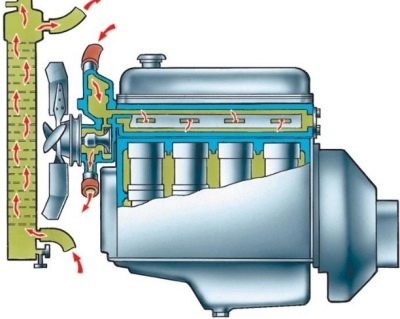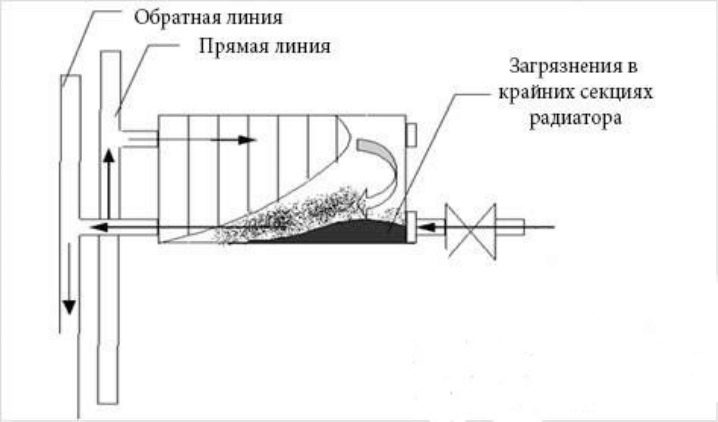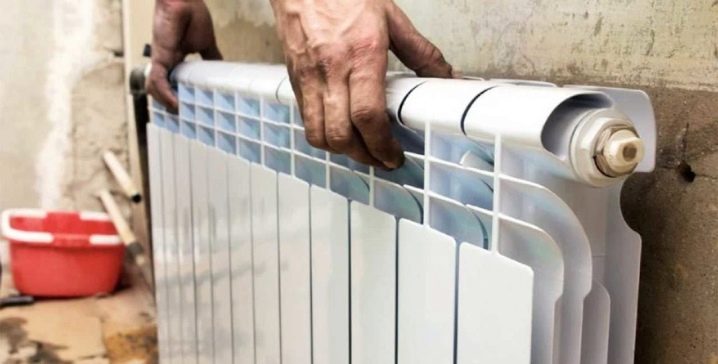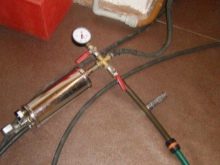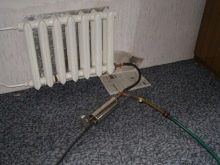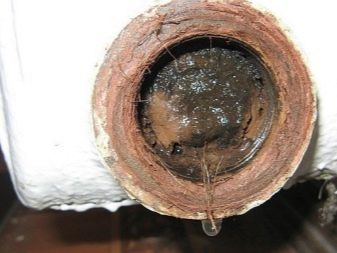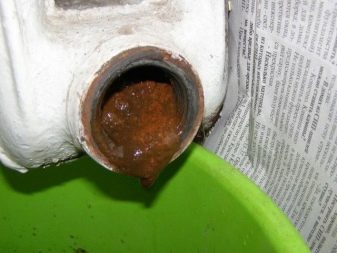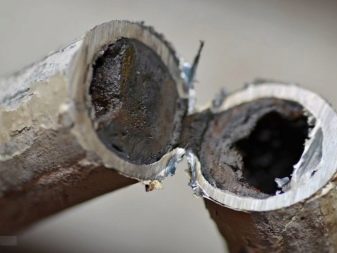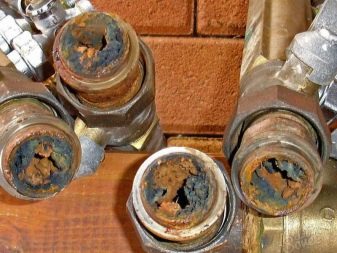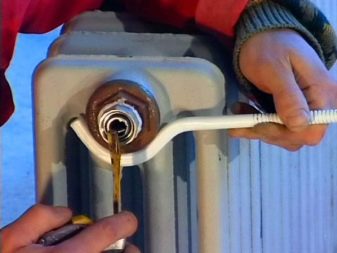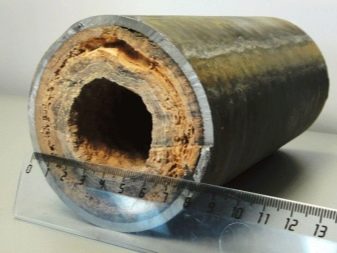How to wash the radiators?
Any heating system needs washing over time, no matter how carefully it is treated. During the operation of the batteries, corrosion is formed on their internal walls, salt crystallization occurs, which clogs the coolant flow and adversely affects the overall efficiency of heating of radiators. The problem can be solved by washing, but very few people know how to do it right.
Special features
Flushing the heating system can not be carried out "blindly", because you need to know what you have to face. Usually, batteries do not heat well when the circulation of fluid in them is weak due to clogging of the inner walls with debris. It is located in the water itself in the form of suspended alkali salts, heavy metals and rust.Utilities are required to annually flush the system to prevent a decrease in water intake. But often this task has to be performed by the residents themselves, inviting specialists to clean the radiators from the dirt that has been compressed inside.
This problem is especially characteristic of cast iron batteries, where sometimes there is a channel for the circulation of water that is no more than 1 cm in diameter due to rare washing. The cause of clogging of steel radiators is the stagnation of rust, due to which they are exposed not only to clogging, but also to destruction. Not every type of rinsing is suitable for such batteries, as after some methods leaks may appear in them. Plastic radiators are also clogged, but flushing them is different from cleaning metal counterparts.
This process can not be called universal, because it is selected specifically for each case. An example of an unsuccessful choice is the flushing of the heating system by workers of housing and public utilities, when they give a powerful pressure, sharply opening the tap of the riser located in the basement of an apartment building. This leads to knocking out locking elements and leaks at the junctions of the spans.But not every family owner can disassemble a battery into separate knees for the purpose of mechanical cleaning to solve the problem of clogging of the heating system.
When washing radiators in an apartment on the lower floors, it is not always possible to expect the efficiency of the coolant, because for high-quality cleaning it is necessary that the washing should be done by the neighbors of all the floors of one branch. Otherwise, after cleaning one apartment and washing the batteries with public utilities at high pressure, some of the garbage can lag behind the walls, and the mud masses will get into the just cleaned batteries. However, it is unlikely that all neighbors will be in solidarity when it comes to flushing, but the insufficient internal cross section creates high hydraulic resistance.
Each mm in the thickness of the deposits increases fuel consumption by 20-25%. In centralized heating systems, water must be pre-cleaned to reduce clogging. But they do not always do this, although the tenants pay decent sums every month for servicing the house. In addition, radiators serve for decades without replacement. According to the established regulations, the flushing of centralized and autonomous systems should be carried out annually. This term is critical.If the pipes are not washed before the start of the heating season, the pipeline is clogged, which causes the heating equipment to break down.
If you ignore clogging, the consequences can be dire:
- the heating system may freeze;
- have to buy new batteries;
- You will need an electric heater that will increase the price for electricity.
How to diagnose?
Flushing should be carried out regularly, as the water used inside the pipes often does not meet the standards for proper operation. If you do not do this, over time leaks form in radiators. You can diagnose the need in different ways.
Usually signs of the need for flushing are:
- heating up radiators too slow;
- different degrees of heating of radiator spans;
- the presence of unusual sound when the boiler;
- cooler compared to battery tubes.
In addition, the cause of poor warming may be airing. In this case, it is enough to reset the airlock by means of a Mayevsky crane.
Ways
To date, there are several ways to flush heating systems.They are different, so they should be chosen taking into account the degree of clogging of radiators, the volume of circuits, as well as the length of the blockage.
You can implement the washing method:
- mechanical;
- chemical;
- dispersed;
- hydrodynamic;
- hydropneumatic;
- electrohydropulse.
It is worth considering that each method has its own nuances that increase its effectiveness. For example, flushing the system with water only under pressure is ineffective, as the pressure can not be expected if the contour is clogged with almost completely compressed scale and rust.
Mechanical
For such cleaning disassemble pipes. It effectively removes accumulated dirt, but is weakly effective against scale on the internal surfaces of the contour. Before such washing, close the valves before and after the boiler, then drain the water from the circuit by means of a drain valve. If it is not, unscrew the cap on the radiator, which is located below and further all in the apartment. For greater efficiency, after discharging the water, disassemble the batteries.
To parse the radiator using keys of the desired size, including pipe. To do this, release the flare nuts that connect the radiator to the pipes.The radiator is carried out on the street or in a bathtub, pre-filling it with dense textiles that protect against mechanical damage. After washing, textiles are thrown away. The drain in the bath is covered with a net to prevent sewage obstruction.
They clean the radiator with a cable, they also clean the pipes. You can remove the primary dirt in a previously prepared container to reduce the load on the sewage system. For greater efficiency, you can disassemble the radiator into 2-3 links before flushing. After cleaning, the battery is washed, directing a stream of water into the internal circuit. To do this, use a hose with an adapter, ensuring the tightness of the hose connection. Stop flushing when the water at the outlet becomes clear.
Chemical
This method is one of the most effective in a private and apartment building. For its implementation using chemicals. The method is available to everyone, as it is cheap, is simple and quick result. To rinse the battery like this, it is not at all necessary to stop the heating system. In addition, it is possible to wash the radiator in this way not only in winter, but also in summer.The method is effective against calcium and rust salts.
To get rid of the radiator from clogging by chemical method, perform simple technology:
- select the right type of chemical preparation, taking into account the heating system;
- liquid or powdered reagent is diluted as described in the instructions;
- prepare the cleaning design, pour into it a diluted reagent;
- using a pump, inject a chemical into the system and wait a while;
- the liquid is drained by opening the stop valve;
- the system is washed several times and filled with water.
This method has its drawbacks. The reagents used for it are toxic, which can be harmful to health and requires an especially careful approach to their use when flushing the system. In addition, the method is not suitable for cleaning radiators from aluminum and creates the problem of disposal of the used solution. Not everyone likes the fact that to connect the booster to the system you need to perform a circuit break.
If the heating circuit is not pressed in, caustic soda, vinegar, whey, and phosphoric and phosphoric acid can be used for flushing.It is important to note that the time selected for cleaning with a chemical should be accurate. If it is enough for one drugs to destroy compressed dirt for several hours, others can be left in the system for a day or more. If you ignore this fact, you can damage the structure of the radiators from the inside.
Disperse
Biological flushing is an improved modification of the chemical method of removing clogged radiators. However, the effect of the reagent here is somewhat different from the original method. The diluted reagent entering the system does not destroy the structure of metal radiators: its action is directed to the molecular rupture of metal compounds and compacted dirt. This method is applicable to batteries from different materials, which is convenient and does not form leaks.
Used solutions are not harmful to humans, so there are no problems with the disposal of waste material. In the process of washing the dirt from the batteries comes out in a split form, so its pieces do not clog the spans of the radiator and pipes. After processing, a special hydrophobic film is formed on the surface, which prevents the formation of a new lime scale inside the contour.
The process is as follows:
- calculate the amount of reagent based on the characteristics of heating systems;
- prepare the device, as in the chemical method;
- the device is connected to the system, the pump is turned on, a liquid is introduced into the system circuit;
- after the right time, the waste material is drained into the sewer;
- washing the system with water several times;
- the system is filled with clean water.
When flushing during the heating season, the device closing the heating system must be connected.
Hydrodynamic
This technique is the supply to the heating system of thin jets of water under high pressure. For it use special nozzles. Water will not be supplied from the tap with a hose, but through a pressure pump. When using this method, it is possible to stop the supply hose on particularly problematic areas where flushing is required. The method is considered environmentally friendly and effective in relation to cast iron radiators.
However, at home it is not so simple to do it, because equipment that can give water pressure of several hundred atmospheres is not cheap.In addition, such flushing requires experience, which may require calling a specialist. The disadvantage is the fact that the pre-deposition must be softened with a special solution, which is different for each material of the batteries.
Hydropneumatic
This method involves the washing of the heating system by supplying high pressure air to the inside of the circuit. It is carried out through the inlet or outlet of one of the radiators, using a compressor, which is connected through a non-return valve. Such a connection prevents water from entering the system. The compressor delivers steam, creating a turbulent flow with high energy. From this, the growth of compressed rust inside the contour is ripped off and washed out of the system.
To wash the radiators in this way, block the water. After that, a compressor with an air gun is connected to the radiator. When the batteries are not dismantled, at the most distant of them they unscrew the plug and connect a hose through the adapter, which will collect the garbage. He is taken to the toilet. The first air supply, which is a short pulse, is performed in the direction opposite to the flow of the circulation system.
Repeated supply is performed by changing the direction of the air. To do this, hoses for feeding and collecting swap places. For greater efficiency of the method, it is possible to dismantle the radiator, although it is more troublesome. Batteries can be carried outside where it will be easier to wash them. After flushing, they are put in place, then the circuit is connected to the coolant and the system is started up in order to wash out the remnants of dirt.
Then shut off the water supply, remove the drain hose, put the plug in place. Now the system can be run. The method is based on shock waves, which in total may need from 2 to 5. This method of washing does not take more than a few minutes if radiators are not removed. It does not depend on electricity, since the installation operates autonomously. Its disadvantage is the limited range, which depends on the technical characteristics of the used pneumogun.
Electrohydropulse
This cleaning is performed on the basis of the application of the electric discharge energy, which destroys the scale and salt deposited inside the circuit. However, the batteries and pipes are not damaged. This method requires special equipment, although its efficiency is high, and the process itself does not need to disassemble the heating system. The shock wave will destroy the existing scale.After the process, it will only be necessary to flush the system with clean water in order to get rid of sediments that lagged behind the walls.
This method is an alternative to battery replacement. It is based on the use of electric charge in water and does not require a large amount of energy. After applying a special installation, the heat exchange surfaces are cleaned of clay and lime deposits completely, which increases the internal section of the contour to the factory one. At the same time it is possible to clean radiators and pipes of any configuration. A coaxial cable with special equipment at the end is placed in the pipe. In the process of work, periodic electric discharges are created, which is why powerful waves and hydrodynamic flows are formed, due to which efficient purification takes place.
What is required?
To wash the heating system independently without disassembling radiators, you will need specialized equipment (CIF), which is called on-site cleaning. It is necessary that the pump gives direction to the movement of fluid in the system. The installation is a plastic container with a pump. In addition, you will need a solution for washing.It is poured into the tank, with the help of the pump will fill the system.
Choose such equipment based on several factors.
- The cleaning system should be automatic with a pulse feed control for flushing.
- The body of the product must be resistant to the use of various disinfectants.
- Dimensions and weight are important, because with large dimensions it will be difficult to use the equipment. The best option will weigh 7-8 kg.
- It is desirable that the device had an indicator of pressure and water flow, the presence of reverse flow.
- The container should contain between 10 and 20 liters.
If you plan to mechanically clean the radiators, you need to prepare a container for draining dirty liquid, unnecessary old rags that absorb moisture well, and also polyethylene so as not to damage the floor covering at the site of cleaning or as the radiator moves to flush. In addition, the work will require keys, a gas burner or a kerosene lamp, a hose for the size of a heating pipe, a cable for cleaning and an iron brush. When applying the chemical method, you will need a reagent that does not destroy the battery, a compressor, an apparatus for injecting fluid into the heating system.The car is chosen reliable, cost savings in this case may affect the quality of washing. This takes into account the type of material used for cleansing.
Cleaning
Cleaning home radiators depends on the skill of the master. The technology of the chemical method is described above. In the presence of certain skills, washing the batteries is done by hand with a mechanical method. Polyethylene is laid on the floor, rags and tools are being prepared. Shut off the riser valve and drain the liquid from the system. The work will be dirty, so prepare the container to collect the dirt coming out with chunks of rust.
To drain unscrew the junction of the pipe and the radiator at the farthest from the heat source radiator apartments. The remaining water will flow to the floor, which must be prevented by substituting the container. Aluminum batteries have drain valves, which simplifies the process of draining residual liquid. If the radiators are made of cast iron or steel, unscrew the plug. If she stuck, the process of unscrewing is performed using a gas burner. As soon as the plug begins to give in, it is unscrewed with a key, the battery is removed from the hinges,carefully turning and pouring the rusty water into a container prepared for this.
It is not always possible to wash the batteries outside. For example, cast iron radiators are quite heavy. If you intend to wash the radiator in the bath, it must be covered with old rags, protecting the enamel. It is not enough just to pour water inside the battery and shake it, it will not give the desired effect. After removal, it is necessary to remove the primary dirt from it with a special cable. It is pushed inward and turned, pulling out a fetid, oozy mass. At the same time water can leak out, which was delayed by a blockage in the battery.
It is necessary to take care of, in addition to the floor, to protect the wall cladding, because the liquid can splash onto the walls on exit. If it is decided to disassemble the radiator into separate sections for better cleaning, this is done before the elements are placed in the bath. It is easier to wash the individual components: it is more efficient. They do this with a hose, because they need water pressure, otherwise only the primary dirt will be removed.
After the process is completed, the joints need to be brushed with an iron pile. This is necessary in order to remove rust from the thread, which may interfere with hermetic fastening. If a large layer of sediment is visible in the pipes, they must also be removed.To do this, you can use the metal bar, as far as possible. To flush the pipes, you need to stretch a hose from the bathroom or kitchen so that pieces of dirt from them do not clog the radiator circuit.
Tips
Cleaning one radiator without the entire highway is ineffective, because dirty water will soon bring rust, scale and other deposits into the circuit. Preliminary, it is advisable to order the cleaning of the entire riser. Only after that you should start washing your radiator. Each millimeter layer of compacted dirt will work as thermal insulation, so you should not forget to flush the system in a timely manner before each heating season.
If the owner of the house does not have a special apparatus for cleaning the batteries, it will not work to flush the radiators in the apartment. You can buy a flush valve and install it. Such a device is sold in specialized stores, although if you wish, you can make it yourself from a ball valve by mounting into a radiator cap. It will allow in the future to carry out preventive flushing of heating systems before the start of each heating season.
The flush valve is installed in the summer, before the start of the heating season. In this case, you can make a blind plug through passage. As soon as the heating is started, an ordinary garden hose is connected to the flushing tap and sent to the sewage system. As soon as the faucet is open, the accumulated slag will fly out of the sections at the water flow front. This method is now widely used by those who do not plan to disassemble radiators and disconnect them from the system for flushing.
To improve the efficiency of washing, you can take a few useful recommendations.
- The use of a cleaning filter will be the best prevention of clogged radiators. If not, you need to flush the system at least once a year.
- When the heating system has several circuits, each of them must be washed separately.
- The best option for flushing is floor-by-floor, and after that pressure testing of the heating system is necessary.
- If there is a lot of rust inside the oil, you first need to remove it, otherwise the battery will have to be washed much longer.
- If flushing is performed with hot water, the toilet earthenware from rapid heating may cause a crack.
- Flushing depends on the number of sections, as well as the connection. Usually the last elements are clogged with more dirt.
- When the connection is lower two-way, the constant circulation of water through the lower collector of the device will prevent silting. This connection is the best.
- It is preferable to design a closed system, since it is less likely to form pollution.
- Residents of apartment buildings should be contacted every year before the heating season to the public utilities, so that they perform the flushing of the entire system, after which you can do it in your apartment.
For information on how to properly flush radiators, see the following video.
